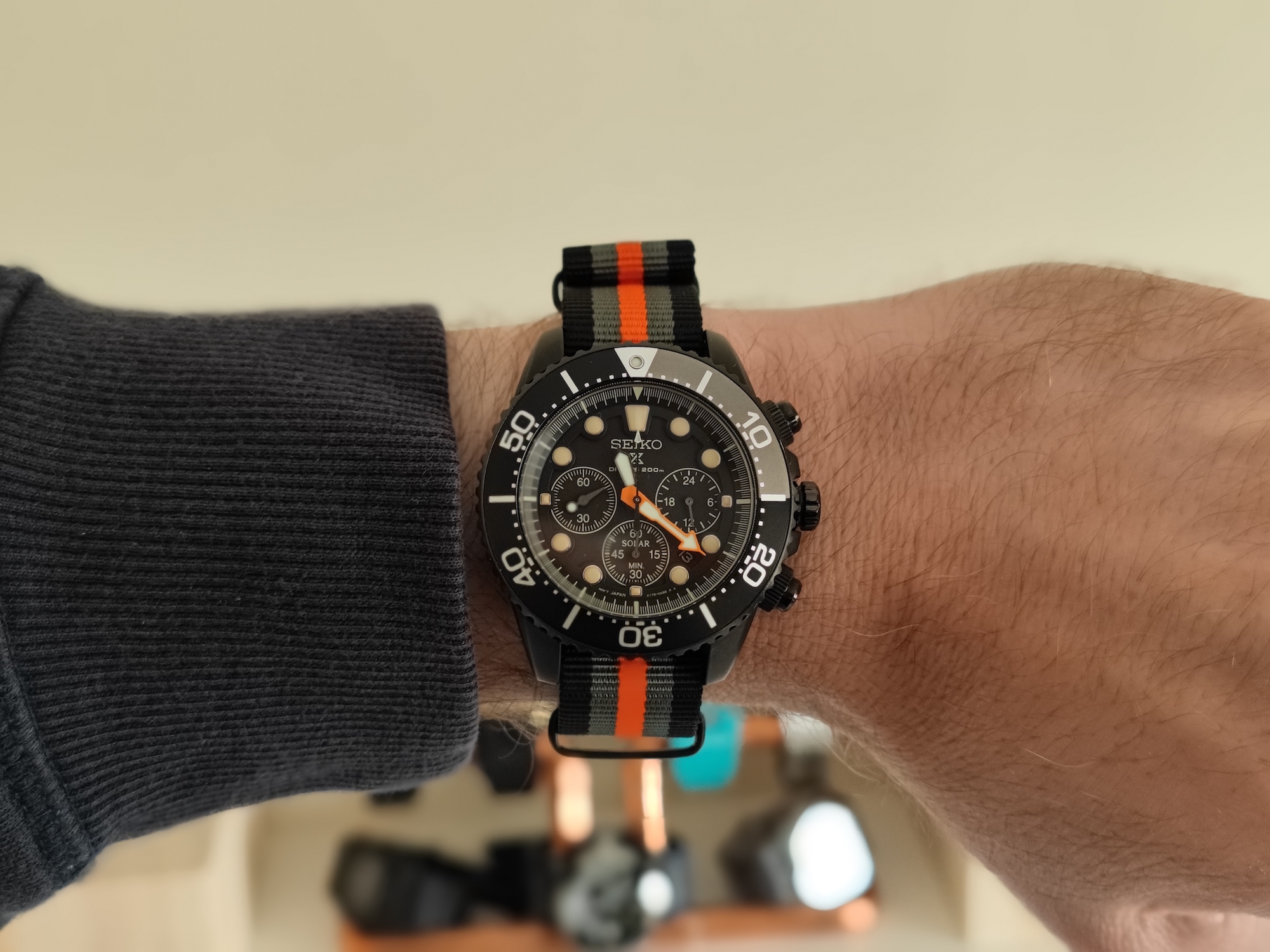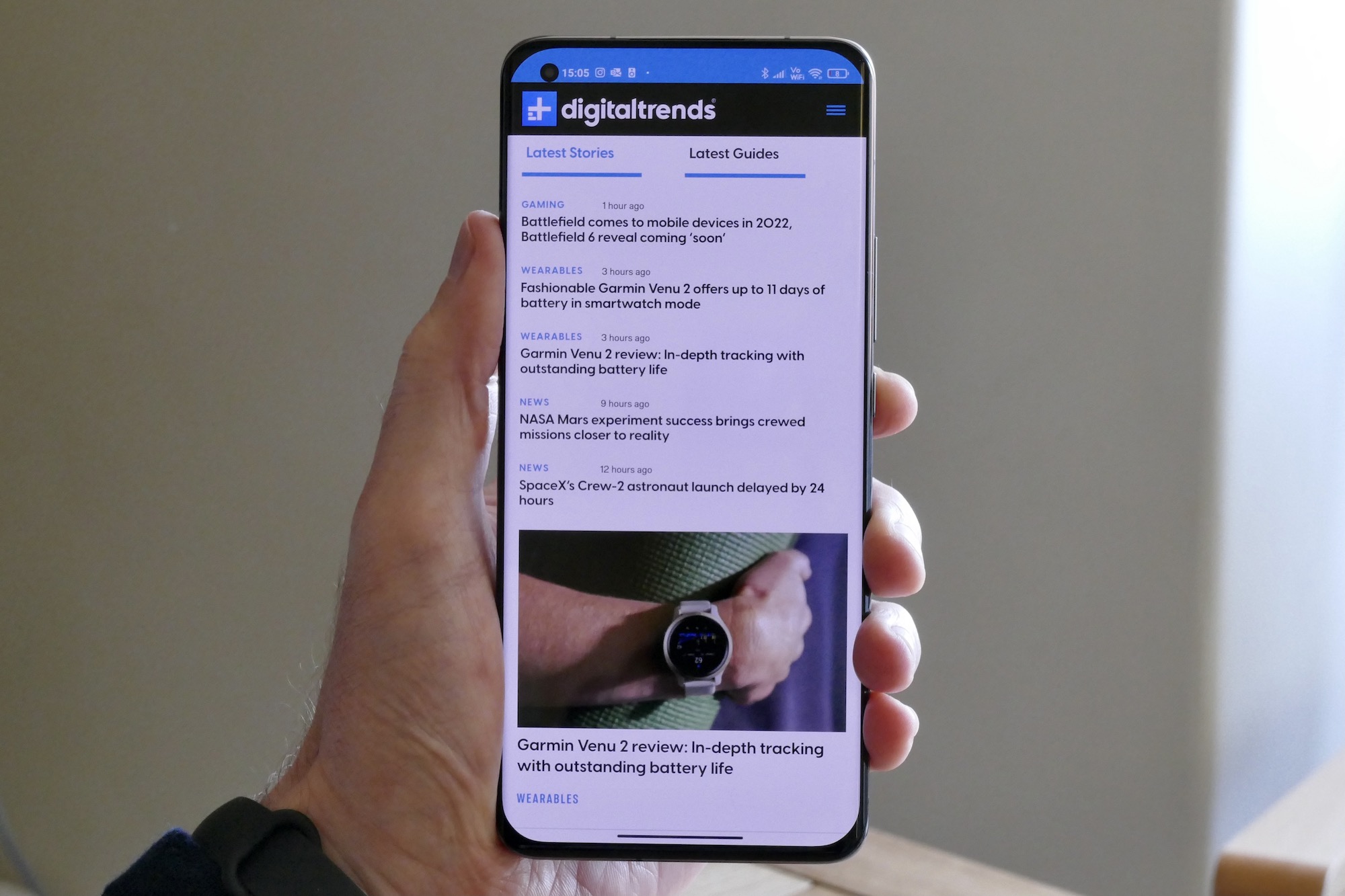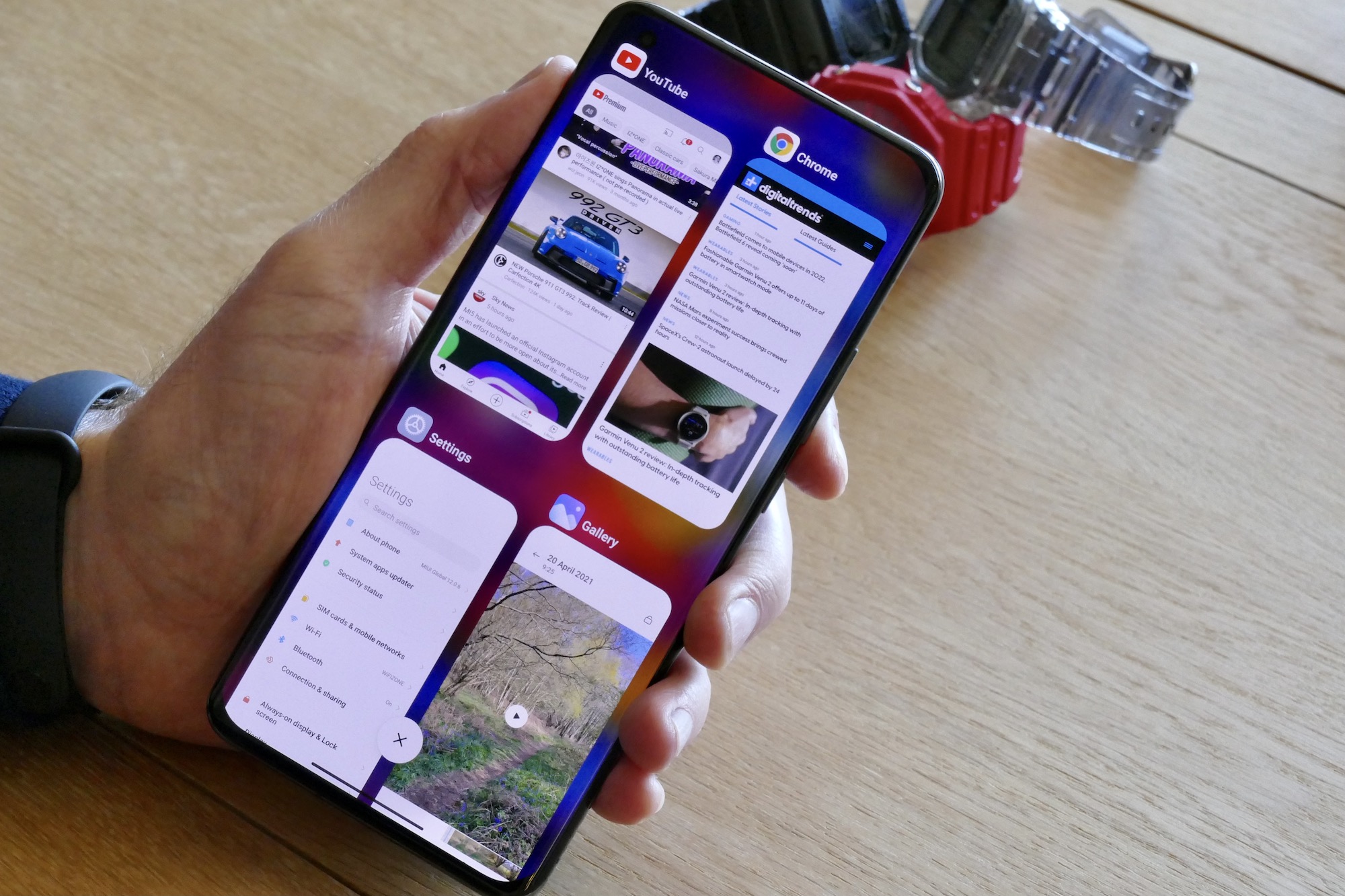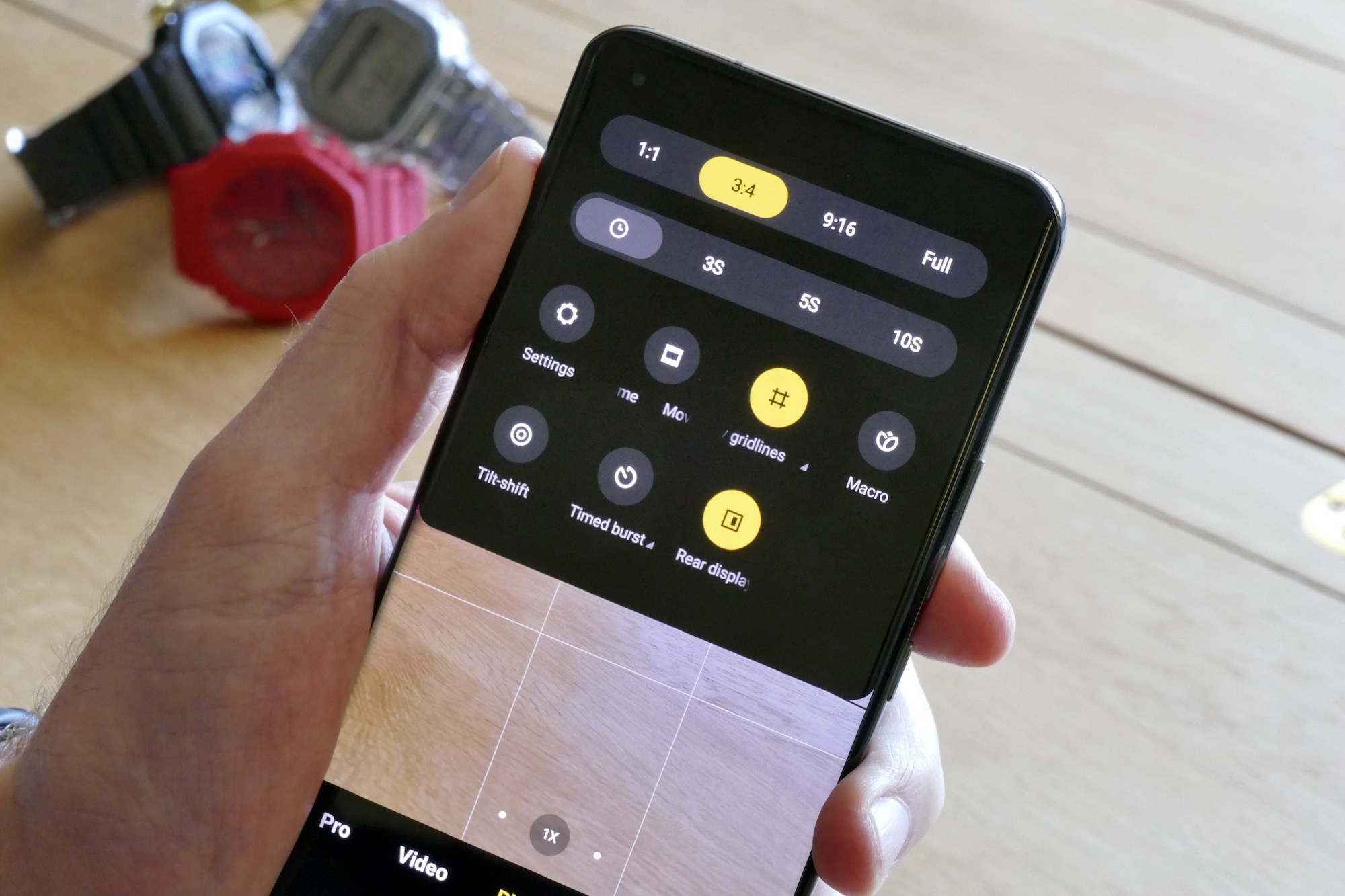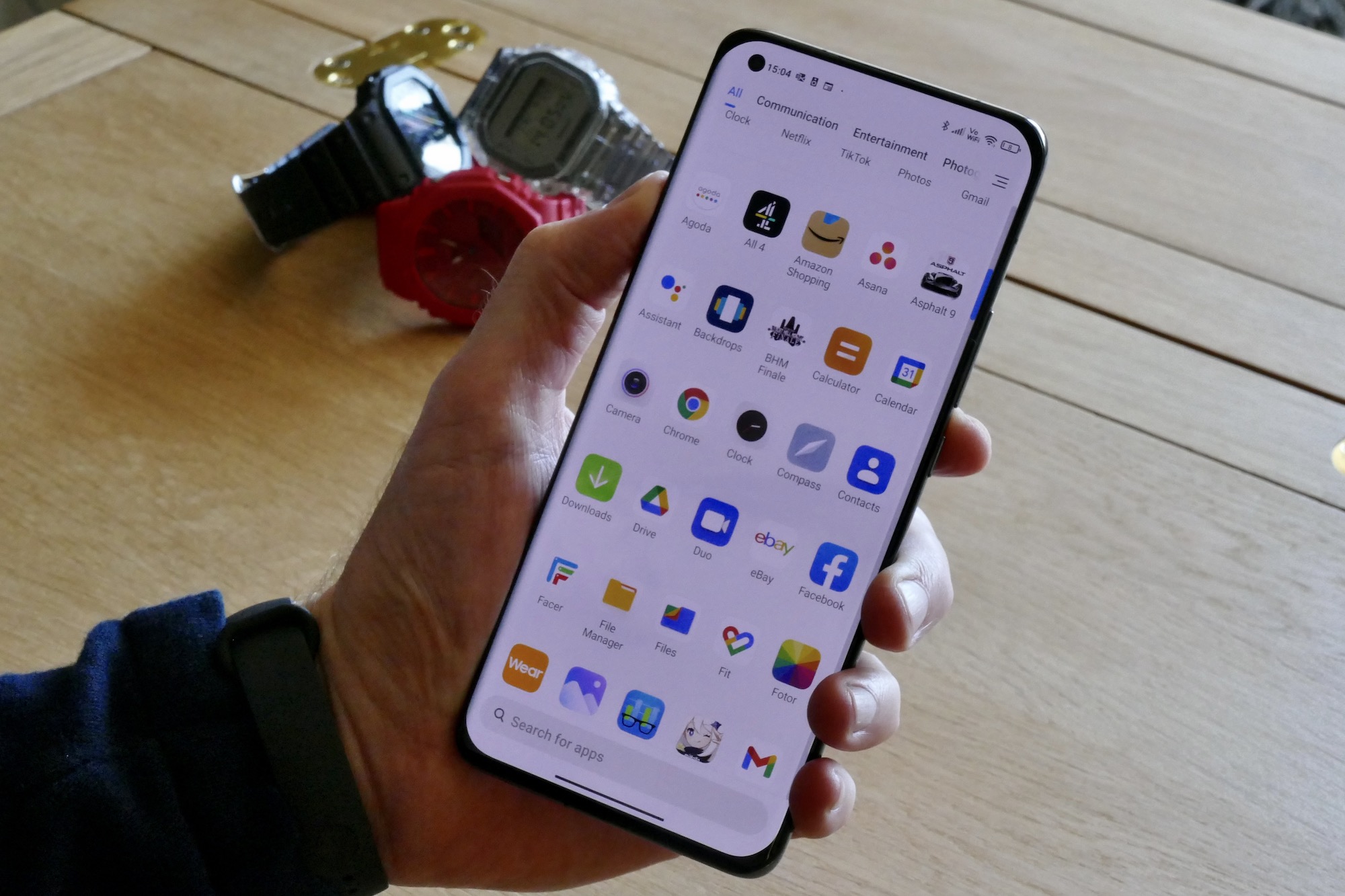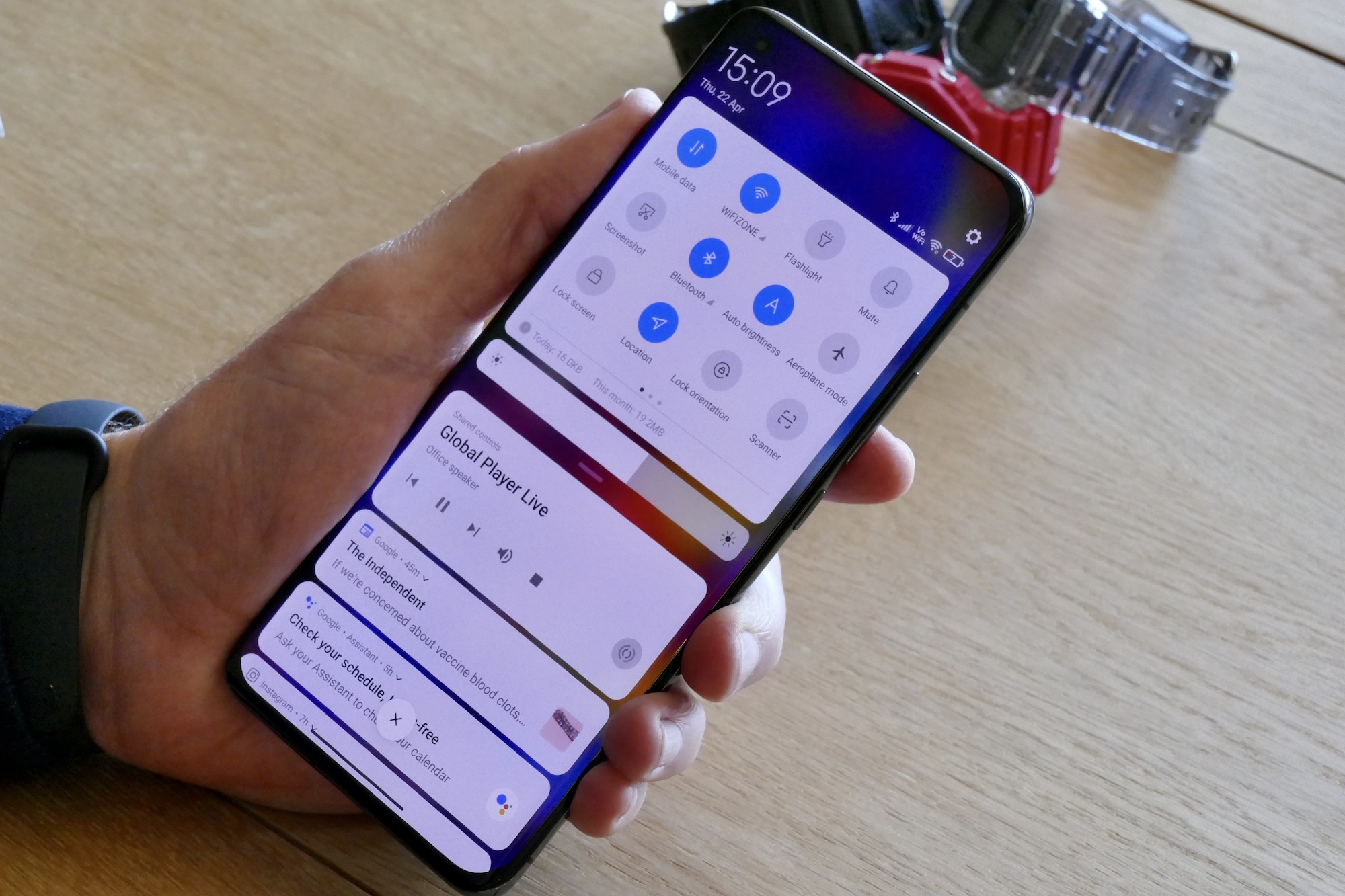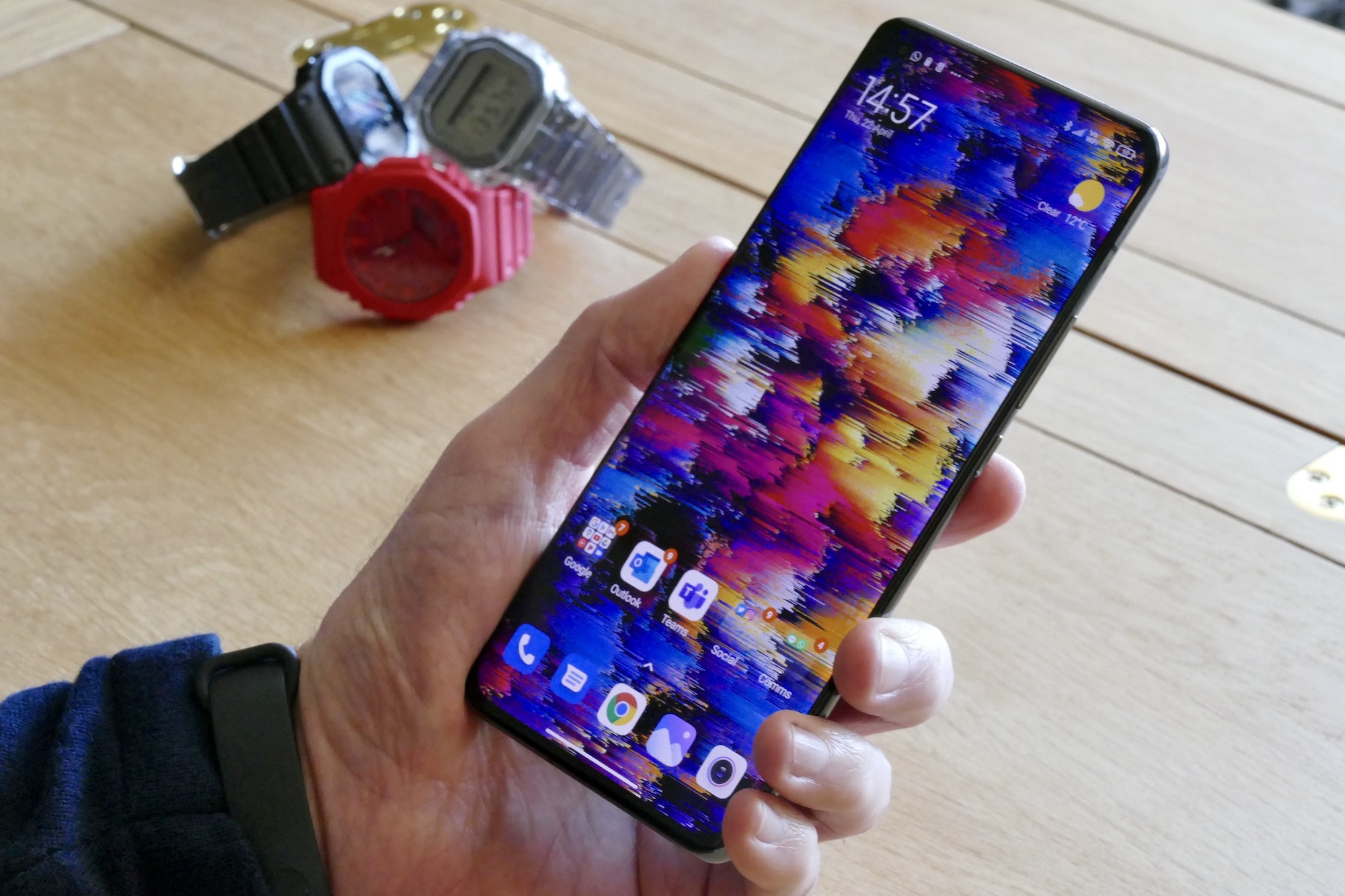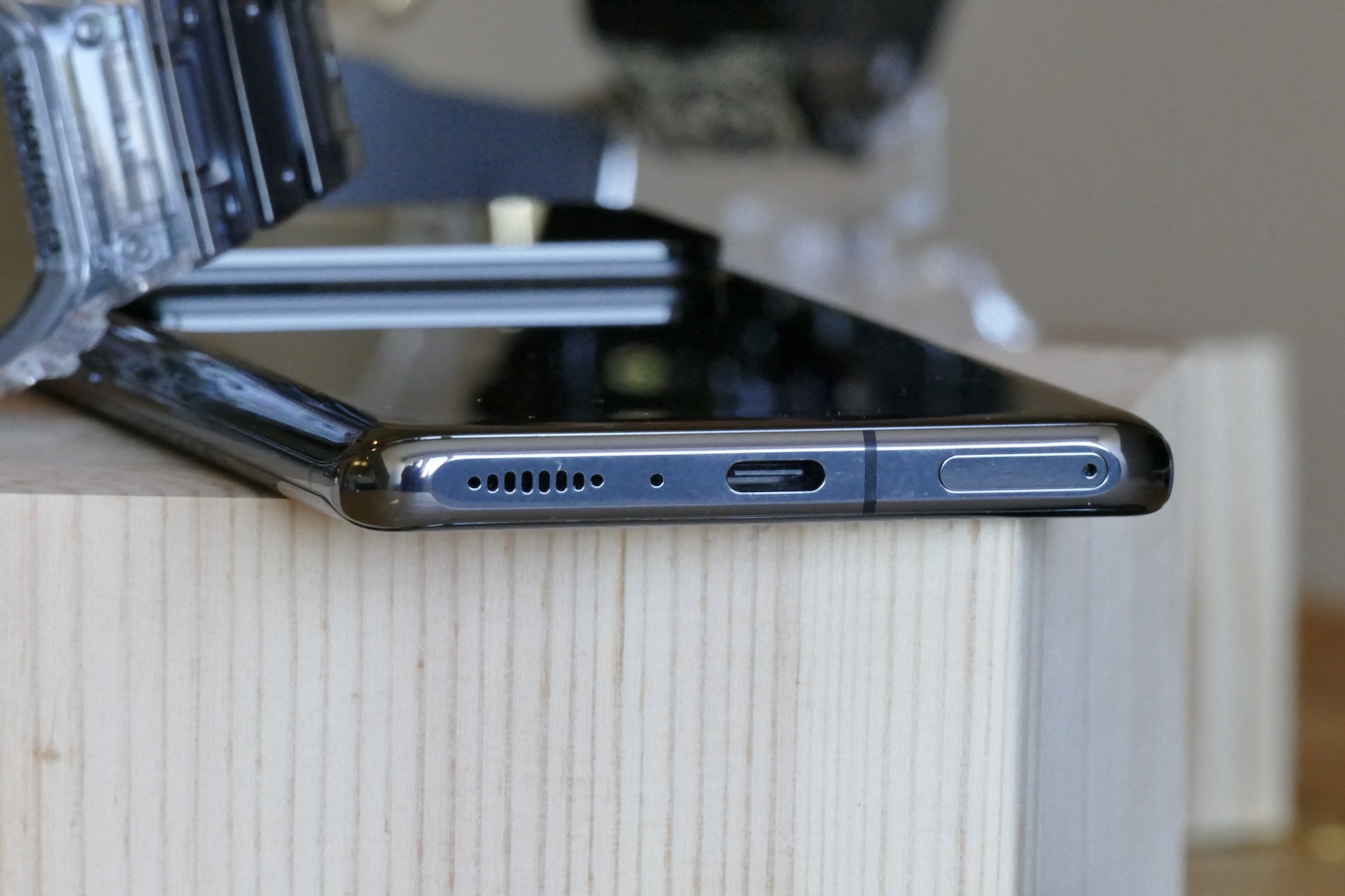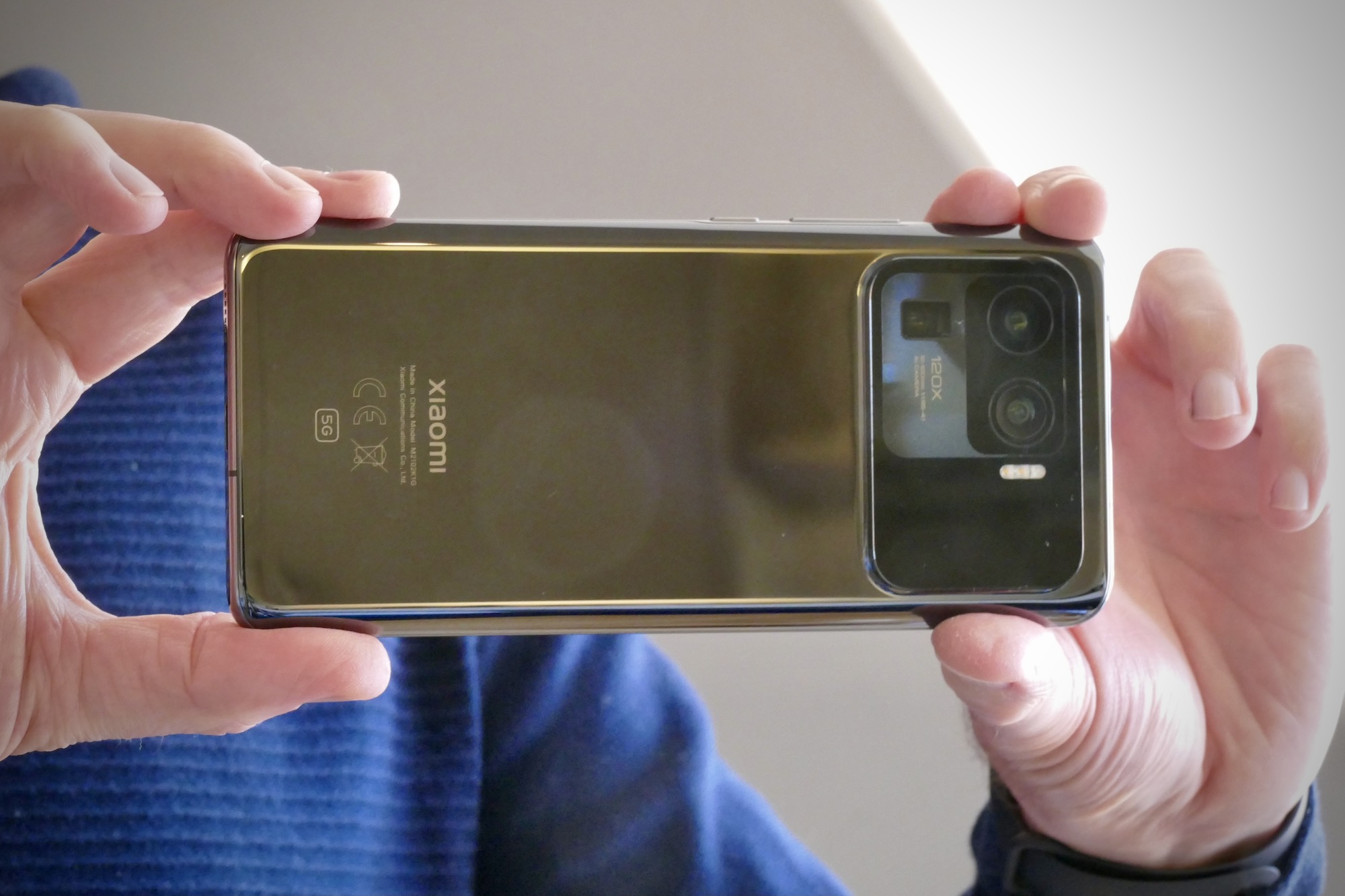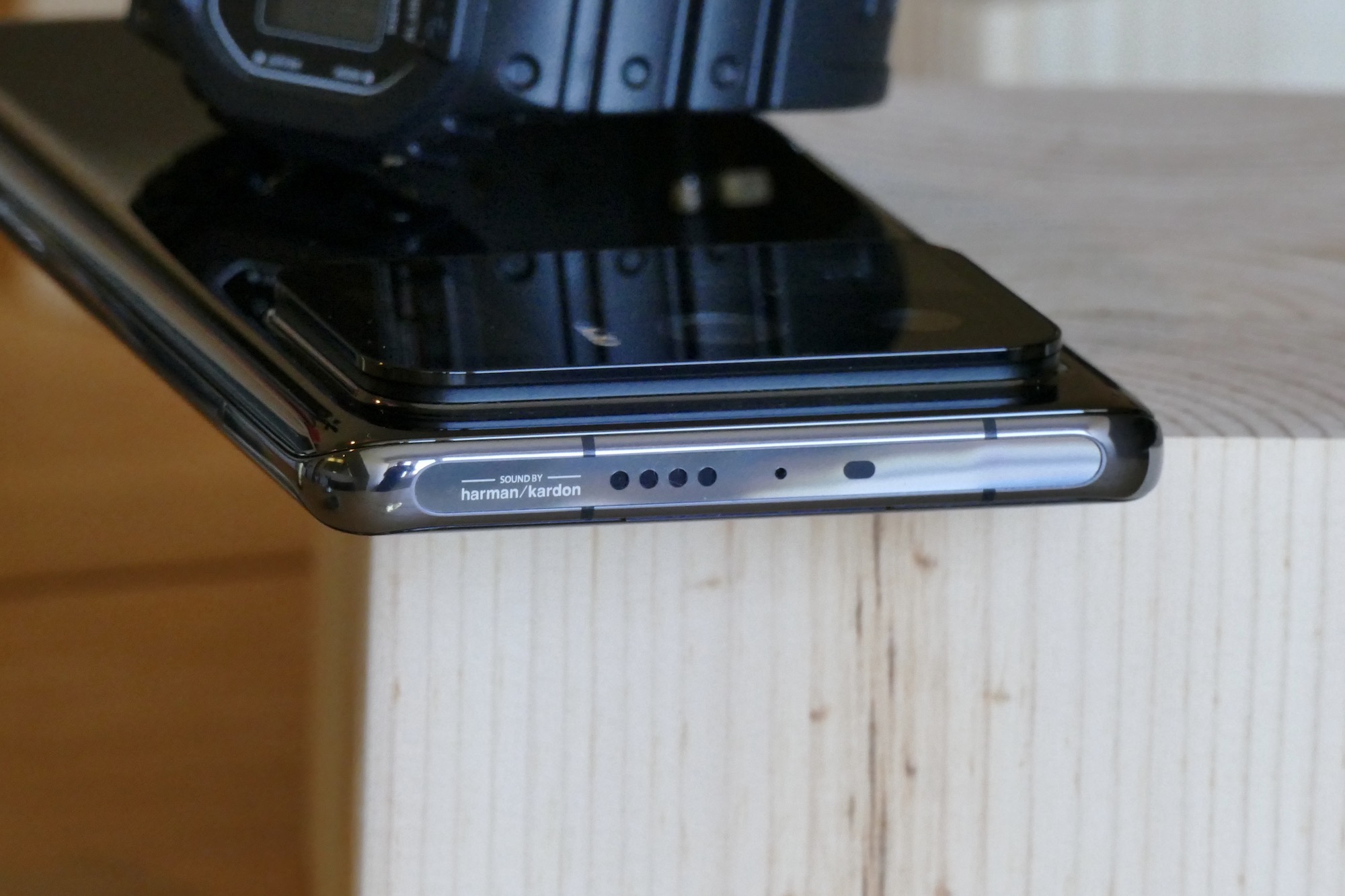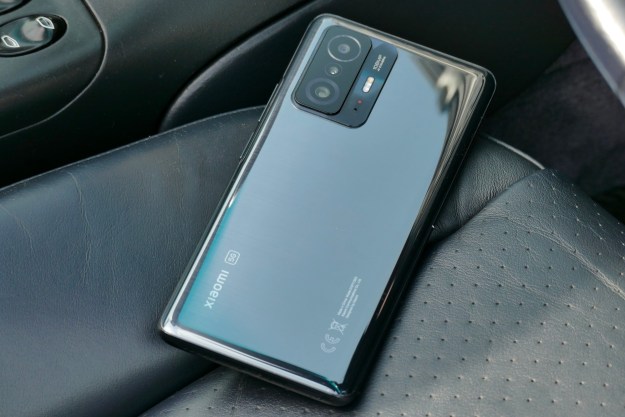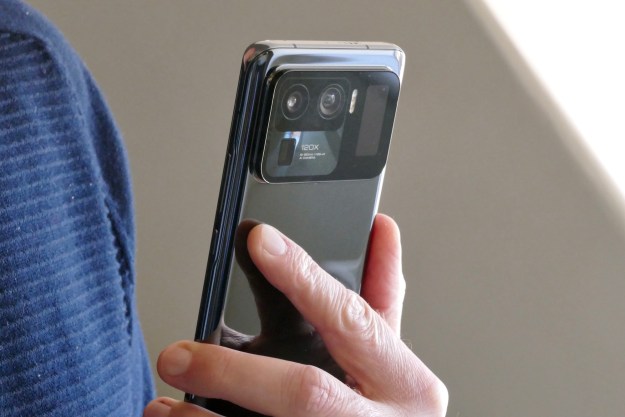
“The Xiaomi Mi 11 Ultra does everything you want from a top-spec smartphone in 2021, but introduces a few things you don't want, and that gives the competition the edge.”
- 50MP camera takes great photos
- Beautiful screen
- Good battery life and fast charging
- Focusing problems frustrate
- Rear screen isn't very useful
Xiaomi knows it has a fight on its hands when it comes to flagship phones this year. Samsung has so far crushed the competition with the Galaxy S21 Ultra, and while the Galaxy S21+ and Galaxy S21 don’t quite meet the same standards, they’re still desirable phones. We’ve already taken a look at Xiaomi’s S21 challenger, the Mi 11, so now it’s time to see whether the Mi 11 Ultra can take on the S21 Ultra, or if it can’t quite live up to its name.
Design
So you think the S21 Ultra is big and heavy? Meet the Xiaomi Mi 11 Ultra. It’s a 234-gram slab of Gorilla Glass Victus and ceramics with a huge camera module taking up the top third of the device’s rear panel. The overall footprint is a tiny bit smaller than the Galaxy phone, but the additional weight and that camera module mean it’s still a serious handful.

The tapered edges, curved corners, and flat ends do make it comfortable to hold ,though, but the balance is slightly off, not that it’s a surprise when you look at the camera. The module is almost comically large, juts out by several millimeters, and is stuffed full of cameras and associated sensors, along with a second screen. Yes, really. The Mi 11 Ultra has a screen in the camera module. I’ll come back to that.

It’s a good thing the camera module is so, how should I say, striking. Otherwise, the Mi 11 Ultra isn’t a very exciting phone to look at. It’s similar to the Mi 11, the OnePlus 8 Pro, and various other phones with curved screens and glossy bodies. It doesn’t attract many fingerprints, but it is very slippery. Xiaomi includes a basic case in the box, and it’s probably wise to use it.
Screens
The Mi 11 Ultra’s screen is one of the best I’ve used on a phone. It’s 6.81-inches with a 3200 x 1440 pixel resolution, a 120Hz refresh rate, HDR10+, Dolby Vision support, and lots of brightness. There was never a time when I wished it looked different, or had an additional feature. There are always-on screens for notifications and the time, on both the front and the back of the phone.

Although the Mi 11 Ultra has a curved edge, the screen doesn’t extend down the sides that far, but still suffers from unintended touches. Suddenly adding blank lines to a text, sliding in the notification shade when you don’t want it, and opening the camera or dialer app will occur. It’s not all the time, but it’s enough to be annoying. If you’re not a fan of curved screens, the Mi 11 Ultra won’t change your mind.
Now we come to the rear screen. It’s a tiny 1.1-inch OLED that sits alongside the cameras and is designed to make it easier to take selfies when using the rear camera, allowing you to check your pose instead of just guessing. It also works as an always-on screen, showing the time, battery meter, and some notifications when the phone is facedown. It’s not a permanently on screen, and can be set to only stay on for up to 30 seconds. You can tap it to wake it up, though.

Is it helpful? Not really. I usually have my phone face up anyway, but if I didn’t, I still have to tap the screen to show the time, canceling out any sly clock-watching advantage. For selfies, it’s too small and low resolution to do anything apart from simple framing. You can see where you are in the shot, but don’t expect much detail. Yes, it does enable you to use the rear cameras for selfies, so it succeeds there, but not much beyond that.
Returning to the main screen, there’s little to separate it from the Galaxy S21 Ultra. It’s bright, vivid, and detailed, plus it has a wealth of custom settings to play around with. These include a Super Resolution mode to upscale low-resolution content, and several artificial intelligence (A.I.) modes that apply HDR effects to stills and video. You can set the DCI-P3 color gamut for accurate colors, change the refresh rate, activate anti-flicker, and change the resolution, too.

It’s hard to pinpoint which makes a difference and where, though. I watched Woyshnis Media’s 4K Mitsubishi Evo X video with the DCI-P3 color profile, 120Hz, WQHD+ resolution, and Super Resolution settings active, and again with auto color and 60Hz, but without Super Resolution, and apart from the refresh rate, the video looked very similar. Ultimately, these settings let you get the screen looking and working the way you prefer, whatever it may end up being. Regardless of what I did, the Mi 11 Ultra’s screen always looked excellent.
One last thing to note is the Mi 11 Ultra comes with a factory-installed screen protector, but this quickly lifted at the corners, and even split at the side after getting caught on something. I had to take it off for the photos here, something I almost never do on a review phone, suggesting it may not be the best-quality protector.
Camera
The Mi 11 Ultra is the first phone to use Samsung and Xiaomi’s jointly developed 50-megapixel GN2 camera, which has a massive 1/1.12-inch sensor. This means it generates some of the most eye-popping natural bokeh you’ve seen from a smartphone, without the need for portrait mode. It’s genuinely impressive, allowing you to take photos that aren’t possible with other smartphones, even the Galaxy S21 Ultra.

This massive sensor does seem to create some problems, though, including a frustrating inability to focus on anything that’s too close to the camera. From pets to food, I’ve got more blurry shots than actual focused shots of all these things, due to the Mi 11 Ultra’s problematic focusing. It’s difficult because there’s no indication on screen if the camera has focused or not, and tapping on your subject doesn’t help either, as there is no visual clue it’s doing as it’s told.
When you stop trying to take photos of anything within about 30 centimeters of the camera, it’s much better. The main camera has a lovely natural tone, with just the right amount of color to accurately capture the atmosphere of a scene. I’ve enjoyed using it a lot, and have rarely taken a photo that I didn’t like. Xiaomi has kept the look of the photos consistent across the 48MP wide-angle camera, with very few differences in color and dynamic range, unless the lighting is particularly challenging.
Another 48MP camera provides a 5x optical zoom, a 10x hybrid zoom, and a ridiculous 120x zoom. The 5x zoom is excellent and I used it frequently to better frame photos of flowers from a distance, although it does get in very close to the subject, so it’s arguably not as versatile and usable as a 3x optical zoom. The 120x zoom produces pixelated photos you’ll just want to delete.
I’ve been impressed with the video ability. The optical image stabilization is very effective, keeping the camera steady when I’m walking or when it’s mounted in a car, and it takes vivid, bright, and very pretty video. There are plenty of different video modes that use artificial intelligence (A.I.) to create unusual effects, just like on the Mi 11, but they’re a bit gimmicky and really only work in specific situations.
The little screen on the back of the phone, set next to the massive main cameras, is undoubtedly an interesting addition, but it hasn’t proven very useful. Maybe I don’t take enough selfies, but even when I did use it, the size is just about right for framing your shot and nothing else. It’s not as convenient or innovative as the Asus Zenfone 7 Pro’s flip camera system. It’s also awkward because you have to activate it yourself in one of the Mi 11 Ultra’s many camera menus. Why Xiaomi didn’t set it to automatically come on with a more easily accessed new mode, I’m not sure.
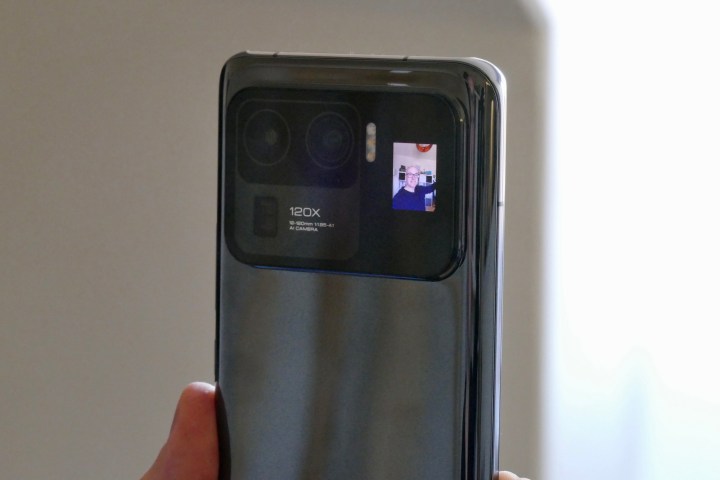
The Mi 11 Ultra’s camera is exciting and takes excellent photos most of the time. It’s the first time the GN2 sensor has been used on a phone, so a few issues are to be expected, and because it can’t be directly compared with anything else, it’s not clear whether the focus problems are a Xiaomi software issue, or a camera issue. Put this aside — it’s possible to work around it once you’re aware — and the Mi 11 Ultra’s camera will take great photos and video you’ll be eager to share.
Performance and software
Equipped with a Qualcomm Snapdragon 888 and 12GB of RAM, plus 256GB of internal storage space, the Mi 11 Ultra is a top-spec, extremely powerful smartphone. I have not experienced any issues with speed or smoothness. The Android 11 operating system is covered by Xiaomi’s MIUI 12 user interface. It’s the same as I used on the Mi 11, and many of the same problems occur.
It’s the best version of MIUI I’ve used, but it’s still frustrating sometimes. The Dark Mode doesn’t always work with other apps — in Twitter, it made my black-and-white profile image look like a negative for example — and the Settings menu is laid out differently than most other Android phones. It’s not bad, just different, and you’ll have to spend some time learning its foibles before feeling comfortable.
I do find MIUI to be a little buggy sometimes, too, and these bugs seem to differ from phone to phone. Several times I found the Mi 11 Ultra dropped calls, something I never experienced on the Mi 11. It didn’t always happen, and was mostly on longer calls. Xiaomi does update its software fairly regularly, which may mean issues like this will be addressed in the future.
The Mi 11 Ultra is a top-spec, extremely powerful smartphone.
I played both Genshin Impact and Asphalt 9: Legends, and while both were smooth and fast, Asphalt would randomly pause until I tapped the screen to continue. It didn’t do it all the time, and may have been a game bug, but it’s worth noting given MIUI’s other issues. Gaming draws plenty of energy and you’ll quickly drain 25% of the battery with an hour of Genshin Impact. You also have to get used to gripping that massive camera module, which is always there under your hand, and wiping off the inevitable fingerprints from the lens.
Battery and security
Battery life from the 5,000mAh cell is much better than om the Mi 11. It’s not quite enough for two days (connected mostly to Wi-Fi), but it’ll last deep into the second day with light use. Most of the time, my days would end with about 40% remaining. Use it heavily when out and about, and it won’t stretch out into a second day. This is what I’d expect from a phone with specs similar to the Mi 11 Ultra.
A 67-watt charging brick comes in the box along with a special USB Type-C cable, and plugging the phone in at 3% saw it go to 94% in 30 minutes, with a full charge after 40 minutes. That’s very fast, considering the 5,000mAh capacity, and it should mean you don’t have to plug the phone in overnight all the time. The Mi 11 Ultra also has 67W wireless charging, provided you use a compatible charger.
An in-display fingerprint sensor and face unlock keep the Mi 11 Ultra secure. The fingerprint sensor can be a little slow, with it often needing a second or so before unlocking the phone, while face unlock is very fast. This means if you’ve got both activated, the face unlock has done its job before your finger touches the screen.
Price and availability
Xiaomi does not sell its smartphones officially in the U.S., so you’ll have to import a Mi 11 Ultra if you want one. The phone is currently available in China, has been confirmed for India, and is expected in the U.K. and Europe. The price has not been announced for the U.K. or Europe yet, but we do know it costs the equivalent of $925 U.S. in China. We think a 1,000 euro price is likely, based on the Mi 11’s 750-euro price tag.
Our take
The Mi 11 Ultra is a familiar Xiaomi story: Really very impressive hardware let down by a few annoyances that really should have been worked out. The 50MP main camera takes excellent photos, and I really like the video performance, but focusing up-close is haphazard. The screen looks amazing, but there are still touch-sensitivity issues with the curved sides. MIUI 12 is attractive and fast, but I found annoying bugs.
All this does spoil the Mi 11 Ultra, and it’s a shame. I can live with the size of the phone and the giant camera module, and appreciate the high specs, but I don’t accept basic problems that can make it annoying to use. When the hardware is this good on paper, and when you’re dealing with a company as big as Xiaomi, these irritations simply shouldn’t be there.
The larger problem with this is the competition has mostly solved these issues, particularly with the 2021 lineup. Apple, Samsung, and OnePlus all have superb high-end smartphones for around the same price as the Mi 11 Ultra, and although they aren’t perfect, they don’t share the same fundamental problems as the Xiaomi phone. It’s frustrating, as the Mi 11 Ultra is otherwise a very capable, highly desirable phone and it should be equal to, or even better than, offerings from these brands.
Is there a better alternative?
The availability makes the Mi 11 Ultra hard to recommend outright, and working on the assumption that you’ll pay $1,000 for the phone, we suggest spending it on a OnePlus 9 Pro, an iPhone 12 Pro, or if you can find a good deal, a Samsung Galaxy S21 Ultra. All three phones have excellent cameras, top-notch performance, and very attractive screens. In other words, everything the Mi 11 Ultra offers, just with the convenience of ordering locally.
How long will it last?
The glass and ceramic body should be durable in general use, and there is a case included in the box to keep the phone safe in the event of something more serious. The Mi 11 Ultra has an IP68 water-resistance rating, too. Google Android updates may not arrive very quickly, but Xiaomi does keep its own software up to date on a regular basis. There’s 5G on board so you can connect to the fastest network, and the phone’s specs are the best you can get at the moment. It’ll last for two years at the minimum.
Should you buy one?
No. It’s still quite a complicated process to buy the Mi 11 Ultra at the moment, and there are equal and better phones available more readily.
Editors' Recommendations
- The best Android tablets in 2024: the 11 best ones you can buy
- Xiaomi 12 Ultra leak shows another ridiculous camera bump
- Crazy 360-degree foldable phone rumored from Xiaomi
- Making sense of Xiaomi’s confusing new Redmi Note 11 range
- Redmi’s Note 11 global launch comes with a few big surprises



